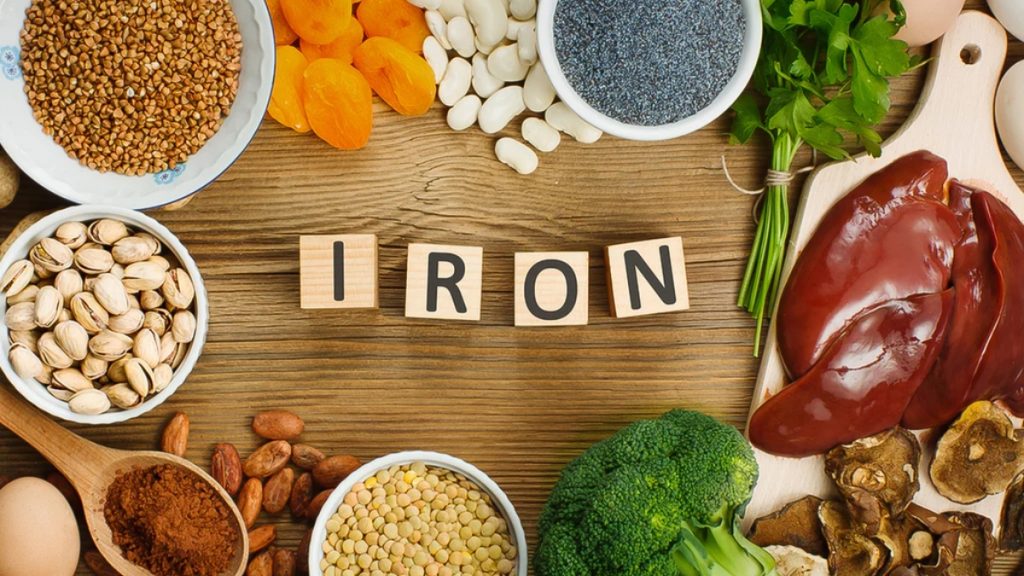Feeling weak, rundown, and tired can be signs you’ve overdone it. Your work schedule could be too intense. You might also overcommit yourself to too many obligations after work hours, including a rigorous gym routine. But your weariness can have a different cause, such as not getting enough of the nutrients your body needs.
Iron, for example, is an essential nutrient your body can’t live without. Otherwise, your immune system isn’t at the top of its game. And you become more vulnerable to catching whatever bug is circulating in the air. Understanding how iron plays a vital role in your body reinforces the importance of getting your daily dose. Here are a few pointers to keep in mind.
Daily Iron Needs Vary
Iron is not a mineral your system makes on its own, so you must absorb it from food and supplements. For some, meeting the daily requirement is easier said than done. While iron is naturally found in foods like chicken and spinach, it’s challenging to always eat right.
Cooking fresh meals may not be practical. In addition, following a vegetarian or vegan diet ups your daily iron requirements. Your body can’t absorb iron from plant-based foods as easily as it does from animal-based sources.
Adding vitamin C to your spinach salads is one way to increase absorbency. Another is to drink juices and supplements made with green vegetables and citrus fruits. A green drink powder containing iron and vitamin C can help keep you on track.
Your biological sex, age, and diet impact how much daily iron you should take. Pregnant women need the most daily iron at 27 mg. Adult women between the ages of 19 and 50 have the second-highest daily requirements at 18 mg.
Because your body can’t absorb iron from plant-based sources as easily, vegetarians and vegans often have to double those doses. Supplements can be the most convenient way to do it. Otherwise, the body won’t make enough hemoglobin and myoglobin. These proteins provide your body’s organs and muscles with oxygen. Iron also fuels hormone production.
Symptoms of Iron Deficiency
Over time, a lack of sufficient iron may lead to anemia. This condition usually develops when your body doesn’t have enough iron stored up. As iron stores diminish, your system can’t make essential proteins and hormones. Plus, your immune system doesn’t get the support it needs to put up a good fight.
The symptoms of iron deficiency and anemia might start subtly. You could mistake these signals for something else, such as running ragged and needing a vacation. Nevertheless, what begins slowly can continue to worsen and accelerate without intervention.
Some telltale signs of iron deficiency are headaches, irritability, appetite loss, and feelings of exhaustion. As anemia progresses, you could develop tingling and numbness in your hands or feet. You might get dizzy and feel lightheaded, even when sitting down. You’ll notice you’re out of breath despite not exerting yourself much. Developing mouth ulcers and cravings for ice are additional symptoms.
Diagnosing Iron Deficiency
Thankfully, the solution for iron-deficiency anemia is to consume more iron. And the root cause is usually not getting enough from your diet. The fix means changing your eating habits and finding ways to help your body absorb more iron. But first, you have to let the medical professionals rule out other causes for your symptoms.
A diagnosis of iron-deficiency anemia comes from a combination of clinical signs, diagnostics, and lifestyle questions. Clinical signs may include a rapid heartbeat and pale skin. A blood test could show low iron levels and blood cell counts. Lifestyle questions might reveal a healthy diet, but one with a heavier reliance on plant-based or nonheme iron sources.
A medical professional will also consider your age, whether you’re menstruating, and if there are other complicating factors. For instance, a history of heavy periods and recent injuries with significant blood loss makes you more susceptible. Certain immune-related disorders in combination with a vegetarian lifestyle could also increase your risk.
Risks of Iron Consumption
Your body requires a certain amount of iron to function properly. However, consuming too much of the mineral can lead to unwanted side effects. Some of these effects are serious, such as stomach ulcers and organ failures. Just as there are recommended daily intakes of iron for various demographics, there are also upper limits.
These upper limits are the maximum amounts of iron you can safely take each day. And for many, the maximums should only be consumed under a medical professional’s direction. These limits are usually for those with higher iron needs, including those undergoing treatment for iron-deficiency anemia. The maximum limit is 40 mg for infants and children up to 13 years. For people 14 and up, it’s 45 mg.
The initial signs of iron toxicity are an upset stomach, nausea, stomach pain, vomiting, and constipation or diarrhea. Like symptoms of anemia, these signals mimic other conditions. However, you shouldn’t dismiss them. Consult a medical professional to assess whether too much iron is built up in your system. Certain genetic conditions can also cause iron toxicity and you may need to adjust your diet.
Iron’s Important Role
Your body can’t survive without iron. When iron gets too low, organs like your lungs don’t get enough oxygen. Your immune system also suffers, and you may find yourself easily getting sick and out of breath. At the same time, high iron levels in the body can become toxic. Finding the right balance between too little and too much will depend on your circumstances.
Working with your doctor, you can determine whether iron and vitamin C supplements are right for you. And you don’t always have to resort to swallowing or chewing pills. You can mix it up with fortified drinks that also help you hit your daily fruit and vegetable targets.




